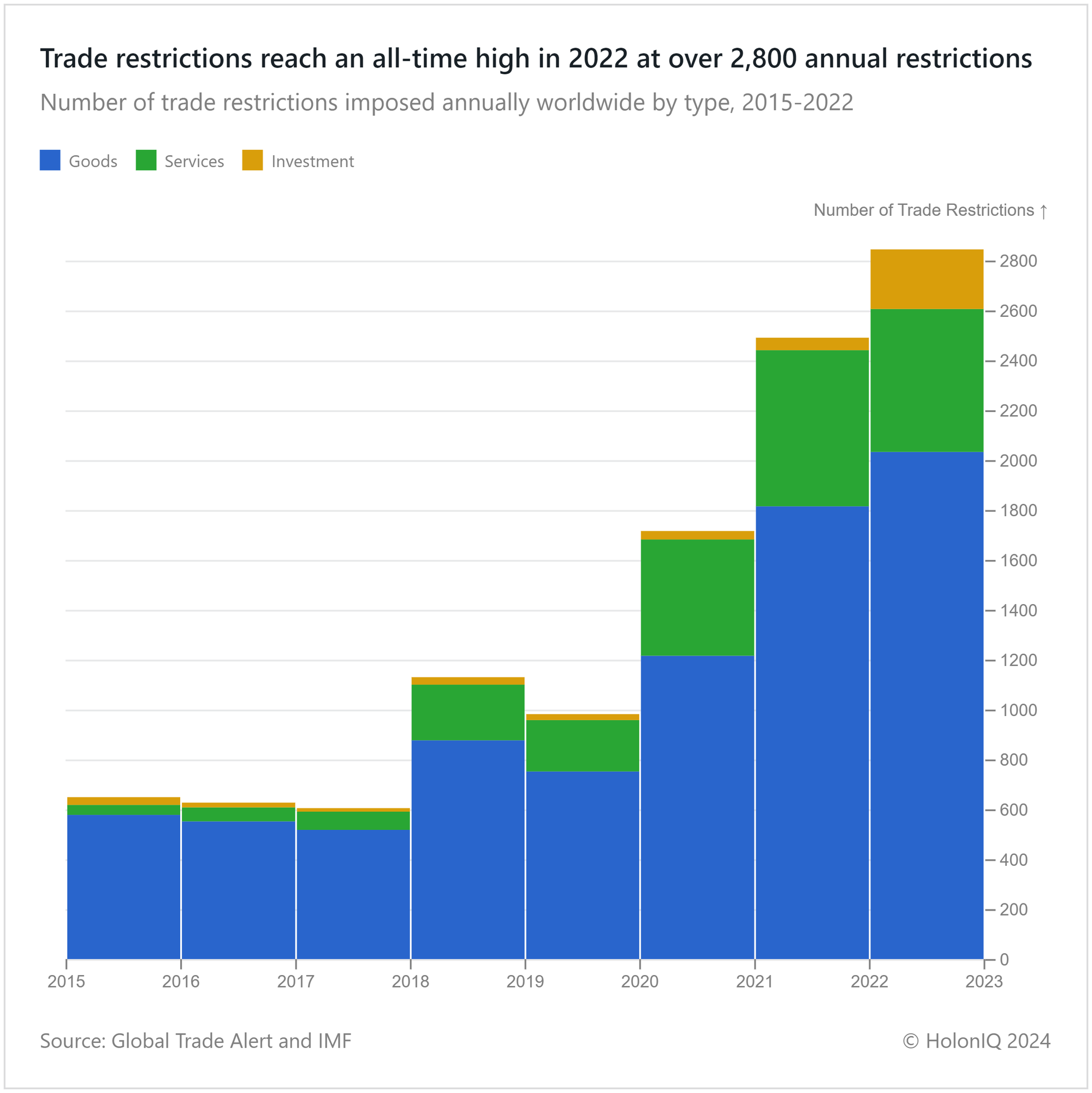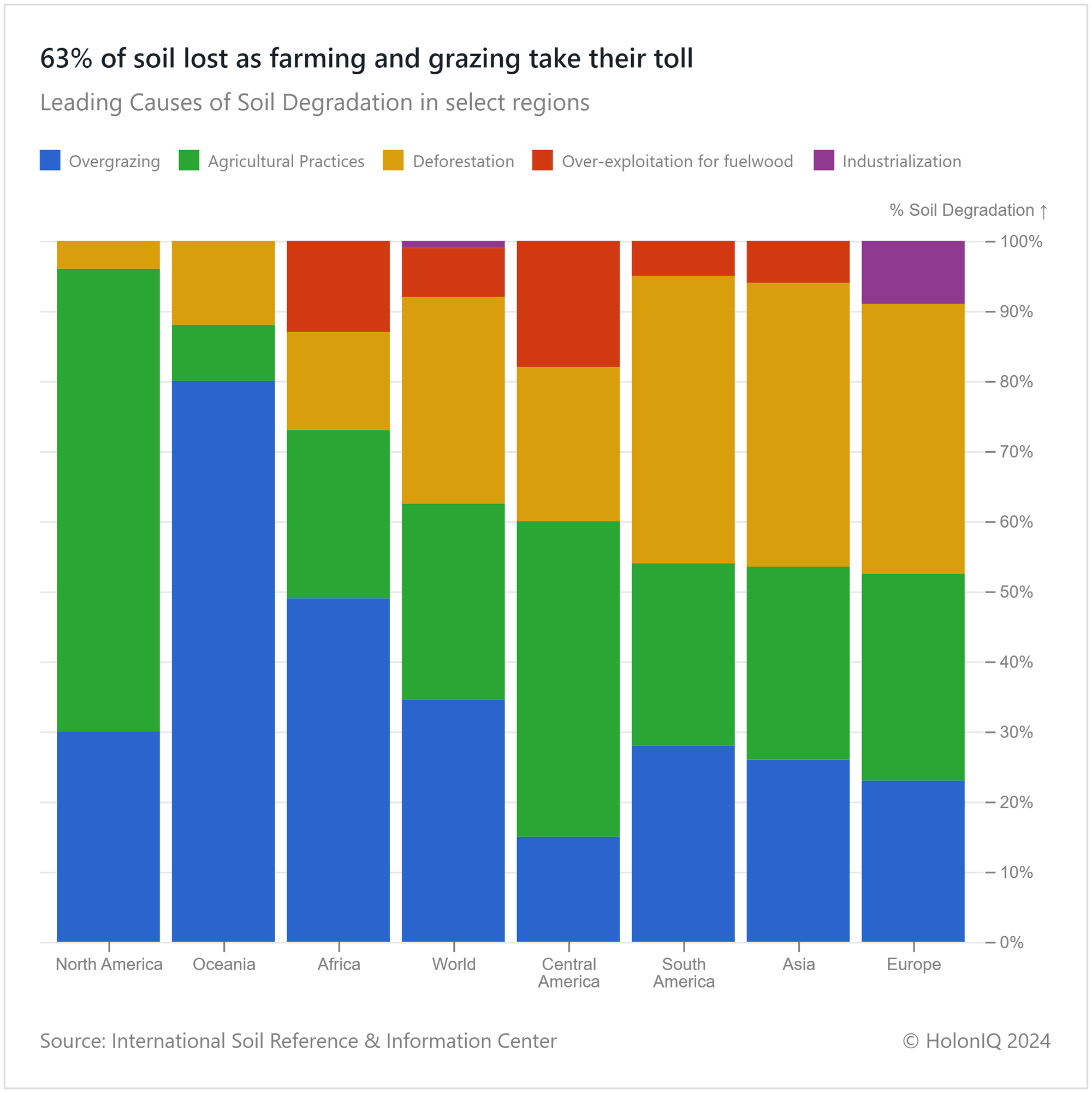🌎 2,800 Trade Restrictions. Distance Ed Decline. 63% Soil Lost.
Chart of the Day #18 looks at Global Trade Restrictions, Distance Education and Soil Degradation.
It has now been over 100 days since the Red Sea crisis. Important trade routes between Asia and Europe have been disrupted, posing billions of dollars of risk for India blocking rice trade and fuelling inflation, also destabilizing China's standing in the Middle East. Today we look at disruptions to global trade over time.
Today's Topics
- 🌎 Trade Restrictions. 2,800 Global Trade Restrictions in 2022.
- 📚 Distance Education. 70+% of US private university enrollments are for distance education courses.
- 🌱 Soil Degradation. 63% of Soil lost from Farming and Grazing.
For unlimited access to over one million charts, request a demo.
🌎 2,800 Global Trade Restrictions in 2022

Global trade faced escalating challenges due to the pandemic, with restrictions almost doubling in 2020 and further climbing up to over 2,800 annual restrictions in 2022. Merchandise imports and exports saw the most annual restrictions at 2,033, followed by services at 573 and investments at 239. Additionally, supply chain disruptions, such as the ongoing crisis in the Red Sea, which has rerouted much of the ocean container traffic around Africa, are driving up costs, fueling geopolitical tensions, and impacting trade. While ports in Africa will benefit from increased cargo traffic in the short term, the combined effect of regulatory restrictions and supply chain disruptions diminishes net trade.
📚 70+% of US Private University Enrolments are for Distance Education Courses

Distance education (DE) has been growing since the beginning of the last decade and accelerated during the pandemic as a result of travel restrictions and social distancing rules impacting physical attendance at universities. DE and hybrid learning are most dominant in private, for-profit universities, with over 70% of students enrolling in those modalities of learning. However, public and private non-profit universities are seen to have a smaller proportion of such enrollments. Although students are returning to non-DE courses, the overall trend indicates a decline in non-distance education courses across all universities in the US.
🌱 63% of Soil Lost by Farming and Grazing

Agricultural practices and overgrazing are the leading reasons for soil degradation, owing to 63% of degradation worldwide. Overgrazing has impacted Oceania the most, causing 80% of soil degradation. While in North America, agricultural practices lead at 66%. However, there have been efforts to curtail soil degradation. One such effort is regenerative agriculture, which has been increasingly adopted by farmers, aiming to restore soil health, enhance biodiversity and boost overall ecosystem resilience.
Like getting this newsletter? For unlimited access to over one million charts, request a demo.
Thank you for reading. Have a great week ahead!
Have some feedback or want to sponsor this newsletter? Let us know at hello@holoniq.com
